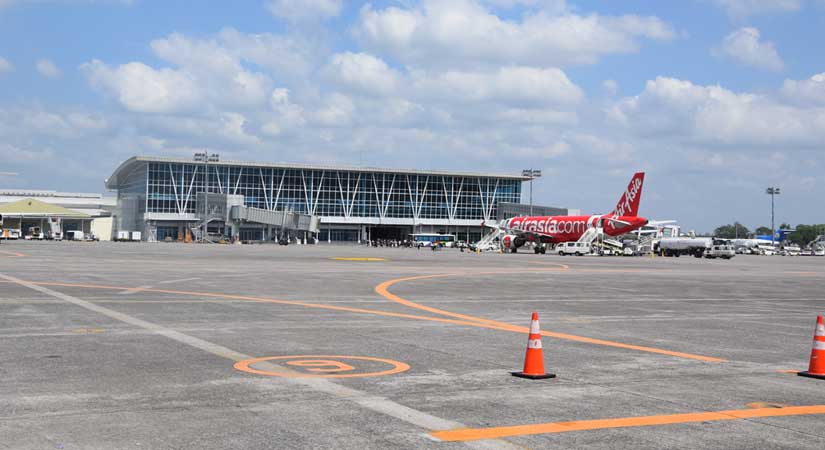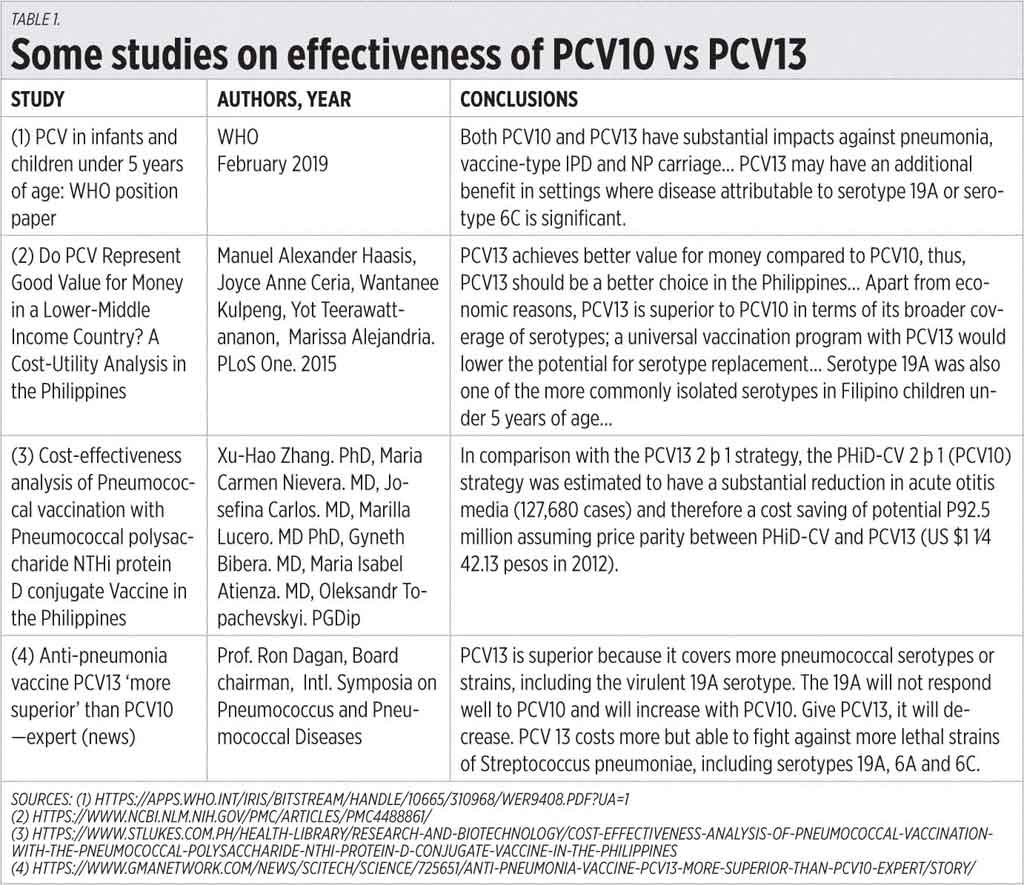Gov’t economic team bats for COVID-19 mass testing
THE ADMINISTRATION’S economic team is in favor of mass testing to contain the spread of the coronavirus disease 2019 (COVID-19) in the country and minimize the outbreak’s harm to the economy.
Finance Secretary Carlos G. Dominguez III said mass testing “is a must” and the country should build up its capacity to conduct widespread testing to include people who have no symptoms but are under monitoring.
“It is a must. [But] if we don’t have it now, we shouldn’t despair but rather build up the capacity to do so,” Mr. Dominguez told reporters via Viber on Tuesday evening.
The National Economic and Development Authority (NEDA) also supported widespread testing, citing that the improved recovery rate in dengue epidemic last year was largely due to early diagnosis.
“The key to a successful medical response is widespread testing. A patient who is diagnosed earlier could be given care to prevent secondary infections. Moreover, early diagnosis will lead to early initiation of quarantine procedures and, therefore, limit or prevent the spread of the virus,” NEDA said in its report on the impact of COVID-19 published last week.
The World Bank said countries like South Korea and Singapore adopted “less disruptive measures” to contain the virus such as mass testing, contact tracing and isolating cases, which effectively minimized the economic losses caused by other stringent measures such as lockdowns.
“The sooner other countries create such containment capacity, the sooner they can end the economic pain caused by stringent suppression measures. That could shorten the time to recovery, but could be a challenge particularly for the poorest countries in the region,” the Washington-based multilateral lender said in its report “East Asia and Pacific in the Time of COVID-19” published Tuesday.
The report said the government may have to subsidize or provide free testing and treatment for the poor.
“Governments should frame the issue as a broader, integrated, and intertemporal challenge: to maximize social welfare, which depends on health and income; and using a combination of containment policies (restrictions, health care/testing) and macroeconomic policies (fiscal, monetary, financial),” World Bank said.
However, the Department of Health (DoH) earlier said the country could not afford to implement mass testing for the meantime due to limited resources, including the number of available test kits, equipment and laboratories as well as experts who can conduct the test.
DoH has recently increased its testing capacity to 1,000 per day with the operation of subnational laboratories and receipt of more than 100,000 testing kits.
The department added that the capacity could further expand if the 49 laboratories that are currently seeking accreditation are given the approval to operate.
As of March 31, the health department has tested 3,938 individuals.
Luzon is under lockdown until April 12 to contain the spread COVID-19, which has infected 2,084 people and killed 88 as of Tuesday.
Meanwhile, the Inter-Agency Task Force for the Management of Emerging Infectious announced that a field test on locally-made test kits is expected to roll out next week.
In a press briefing Thursday morning, the task force’s spokesperson, Cabinet Secretary Karlo Alexei B. Nograles, said P53.2 million has been allocated by the Department of Science and Technology (DoST) for the production of the GenAmplifyTM CoronaVirus Disease-2019 (COVID-19) rRT-PCR Detection Kit.
These kits are developed by the University of the Philippines — National institute of Health and Manila HealthTek Inc.
“From April 4 to 25, we expect field implementation of the same in five facilities,” he said.
Prior to the rollout, a field validation is expected to finish on Thursday.
DoST will distribute 26,000 test kits to the Philippine General Hospital, Makati Medical Center, The Medical City, Vicente Sotto Memorial Medical Center, Southern Philippines Medical Center, and Baguio General Hospital for the field implementation. — Beatrice M. Laforga and Gillian M. Cortez
OCD to lead management of donated medical supplies, equipment
THE PALACE on Thursday released an order for the management and distribution of donated medical supplies and equipment as the country battles the spread of the coronavirus disease 2019 (COVID-19).
Administrative Order No. 27 series of 2020, signed by President Rodrigo R. Duterte on March 31 and released on April 1, state that there is “an imperative need to properly consolidate and manage all donations of medicines, medical equipment, and supplies, and other health products to address COVID-19.”
The Office of Civil Defense (OCD) will be in charge of consolidating all donations and establish an inventory, with logistical support from the Department of National Defense.
All agencies are directed to coordinate with the OCD and local governments are requested to provide assistance. — Gillian M. Cortez
Senate, DSWD working out emergency subsidy program details
THE SENATE will coordinate with the Department of Social Welfare and Development (DSWD) to thresh out the details of the Emergency Subsidy Program’s implementation, including whether assistance packages will be distributed fully in cash or combined with basic commodities.
Senate President Vicente C. Sotto III said on Wednesday that he will need to clarify whether the P5,000-8,000 monthly assistance will be distributed in cash and in kind or fully in cash.
“Isa ‘yun sa mga itutuwid o pa-plantsahin muna… kailangan makausap (That’s one of the things that will have to be ironed out… we need to discuss),” Mr. Sotto said over DzMM Teleradyo.
He said the Senate as well as the House of Representatives prefer to distribute cash, but is open to discuss matters with the DSWD as well as Executive Secretary Salvador C. Medialdea.
He explained that cash assistance would be more convenient in terms of distribution. It will also allow household beneficiaries to budget according to their needs.
DSWD Spokesperson Irene B. Dumlao, on the other hand, said the Social Amelioration Program will consist of cash assistance and family food packs.
“In cash and in kind ‘yung Social Amelioration Program,” she said, also over DzMM.
Republic Act No. 11469, or the Bayanihan to Heal as One Act, provides that low income households will receive P5,000-P8,000 per month for two months, depending on the minimum wage rate in the region.
The computation for the subsidy will also take into consideration DSWD’s unconditional cash transfer program and rice subsidy. — Charmaine A. Tadalan
DTI clarifies special measures for senior citizens

THE DEPARTMENT of Trade and Industry (DTI) has clarified that their advisory for supermarkets and pharmacies to prioritize senior citizens is not intended to encourage the vulnerable sector to leave their homes amid the coronavirus disease 2019 (COVID-19) outbreak.
In a statement on Wednesday, DTI said the issuance requires establishments to assist senior citizens who do their own shopping because they live on their own. “There are senior citizens who are living alone and are given no choice but to secure personal provisions such as food, medicines, and other basic necessities and essential items for themselves,” the statement said.
“Through this policy issuance, we are requiring the business establishments to provide them with assistance and give due preference to ensure that they secure their needs quickly, thus making their stay outside their homes kept at the absolute minimum.”
Earlier this week, DTI called on supermarkets and pharmacies to adopt measures that will further ease the shopping process as well as improve health protection for senior citizens as the country deals with COVID-19.
Among the recommended measures are allocating a “seniors only” shopping hour, exclusive entry to avoid the queue when entering establishments, and an express lane in addition to the existing senior citizens lane for those buying 25 items or less.
Under Philippine law, senior citizens are those aged at least 60. — Jenina P. Ibañez
OFWs arriving in Japan to undergo 14-day quarantine
OVERSEAS Filipino Workers (OFWs) arriving in Japan will have to undergo a 14-day quarantine period and will not be allowed to use public transport upon entry, according to the Philippine Overseas Employment Administration (POEA).
In its Advisory No. 39 series of 2020 dated March 27, POEA said, “The Japanese government has included the Philippines in the list of countries subject to strengthened quarantine measures effective 12:00 AM, 28 March 2020.”
Upon arrival, OFWs must stay at places designated by the Chief of the Quarantine Station for 14 days.
OFWs must also pre-arrange their transfer to the quarantine site as public transportation will be off-limits.
OFWs will also be subjected to PCR test to determine if they carry the virus and a periodic health check by Public Health Centers. — Gillian M. Cortez
Employers allowed to defer holiday pay for April 9–11
EMPLOYERS are permitted to defer the holiday pay to their workers for April 9-11, which are declared non-working days in observance of the Catholic Holy Week, as the country is placed under a state of calamity due to the coronavirus disease 2019 (COVID-19).
The Department of Labor and Employment (DoLE) made the announcement through Advisory No. 13-A released on Thursday.
“On account of the existence of a national emergency as aforementioned, employers are allowed to defer payment of holiday pay on April 9, 10 and 11, 2020,” DoLE said.
April 9 is also a holiday in commemoration of Araw ng Kagitingan (Day of Valor).
The entire Luzon island is under enhanced community quarantine from March 17 to April 12. — Gillian M. Cortez





